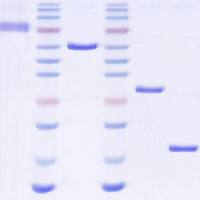Detecting Recruitment of DNA Damage Response Factors Through the eChIP Approach
互联网
437
DNA interstrand crosslinks (ICLs) are lesions that covalently link the two strands of DNA. This type of DNA damage represents one of the most complex DNA lesions whose repair mechanisms remain largely unclear. Uncovering proteins involved in the processing of ICLs and understand how they interact with the damaged DNA in vivo is crucial for the understanding of DNA interstrand crosslink repair processes. Moreover, the presence of an ICL during S phase constitutes the most severe blockage to DNA synthesis and results in prolonged stall of replication forks. The mechanisms of resolving a stalled replication fork is poorly understood because proper experimental platforms are lacking. To enable detection of protein recruitment to site-specific ICLs and to ICL-stalled replication forks, we established a novel eChIP (abbreviation for e pisomal ch romatin i mmunop recipitation) assay system to study the association of various DNA damage repair proteins with ICL lesions in vivo. This EBV episomal replication-based assay allows detection of protein enrichment at ICLs at the molecular level. Since ICLs cause replication fork blockage in an episomally replicating plasmid, the eChIP approach also allows the study of DNA damage response factor recruitment, such as checkpoint initiation factors, to stalled DNA replication forks. With proper adaptation, the eChIP approach may be employed to study other site-specific DNA lesions such as UV photoproducts and oxidative damage in vivo.









